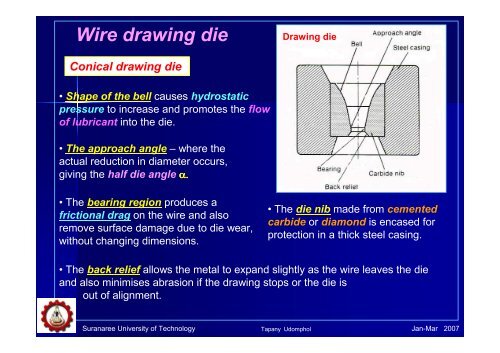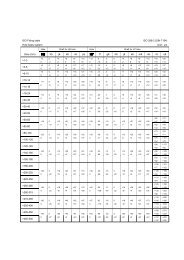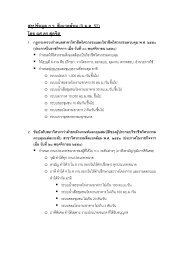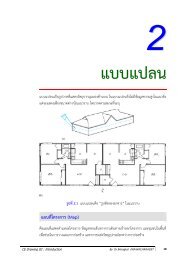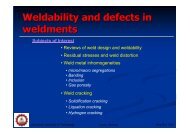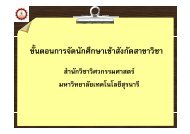Drawing of rods, wires and tubes
Drawing of rods, wires and tubes
Drawing of rods, wires and tubes
You also want an ePaper? Increase the reach of your titles
YUMPU automatically turns print PDFs into web optimized ePapers that Google loves.
Wire drawing die<br />
Conical drawing die<br />
• Shape <strong>of</strong> the bell causes hydrostatic<br />
pressure to increase <strong>and</strong> promotes the flow<br />
<strong>of</strong> lubricant into the die.<br />
• The approach angle – where the<br />
actual reduction in diameter occurs,<br />
giving the half die angle α.<br />
α.<br />
• The bearing region produces a<br />
frictional drag on the wire <strong>and</strong> also<br />
remove surface damage due to die wear,<br />
without changing dimensions.<br />
<strong>Drawing</strong> die<br />
• The die nib made from cemented<br />
carbide or diamond is encased for<br />
protection in a thick steel casing.<br />
• The back relief allows the metal to exp<strong>and</strong> slightly as the wire leaves the die<br />
<strong>and</strong> also minimises abrasion if the drawing stops or the die is<br />
out <strong>of</strong> alignment.<br />
Suranaree University <strong>of</strong> Technology Tapany Udomphol<br />
Jan-Mar 2007


